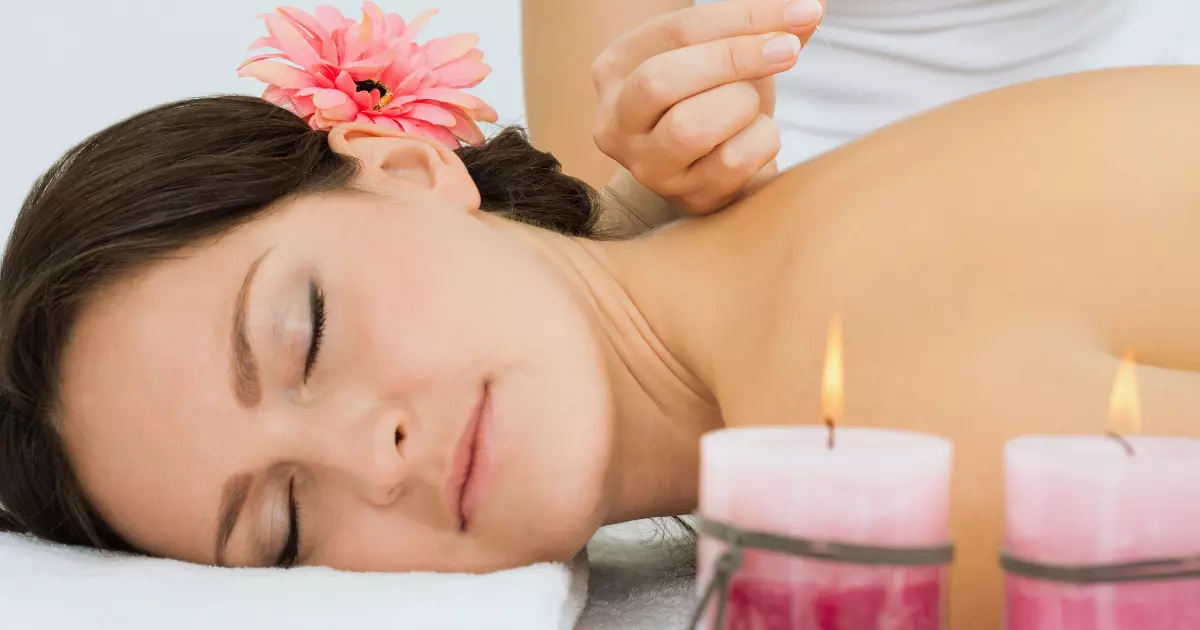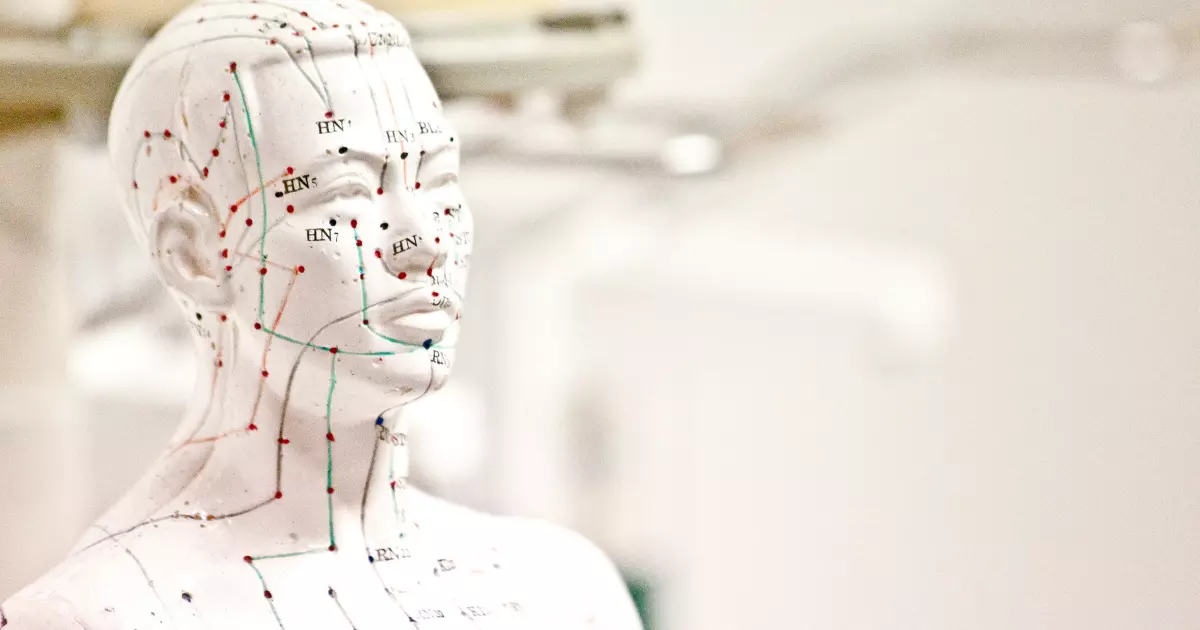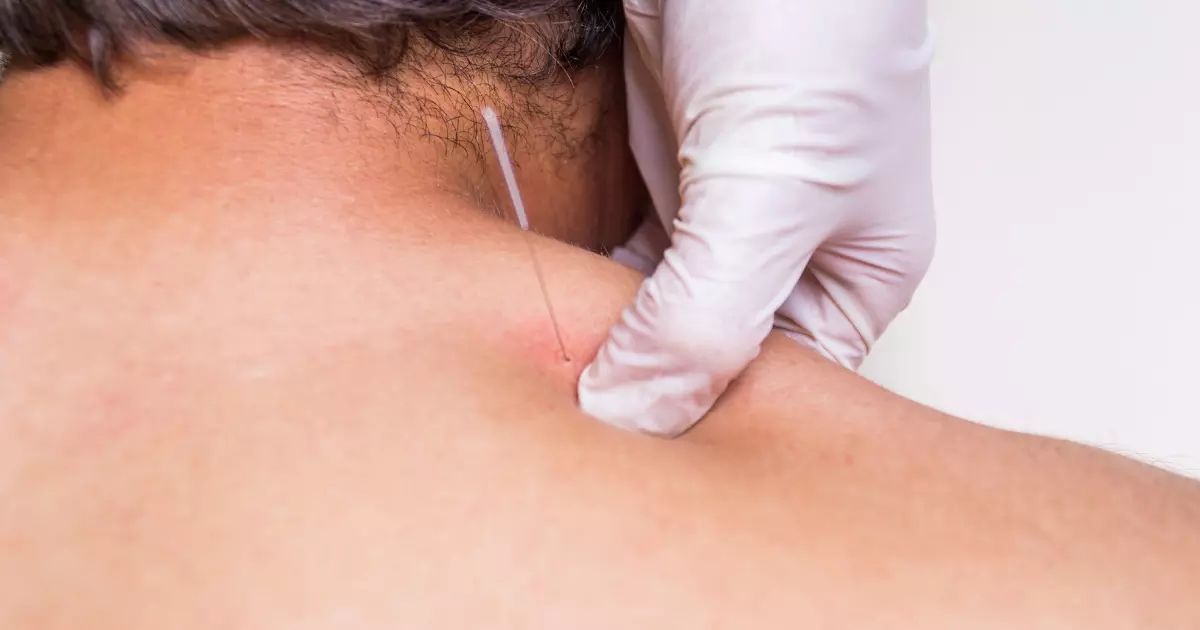Are you feeling like your energy is constantly drained? Does chronic pain significantly impact your daily activities? It’s time to pierce through the haze. Unlock the incredible benefits of acupuncture at Inner Ocean Center for Healing.
Acupuncture is part of Traditional Chinese Medicine. It involves inserting thin needles into specific points to stimulate the body’s energy flow known as “Qi”. The disruptions in the flow of qi can lead to health problems. By strategically targeting acupuncture points along meridians (energy pathways), acupuncturists can restore balance. This alternative therapy is often used to alleviate chronic pain and improve various health conditions. The effectiveness of acupuncture is vital for the body’s natural healing processes.
Say goodbye to the limitations of conventional treatment. Acupuncture is known to treat a wide range of conditions for improved quality of life. This includes back pain due to a herniated disc, neck pain, osteoarthritis, migraines, and headaches. The World Health Organization (WHO) recognizes its effectiveness in treating over 40 conditions.
At Inner Ocean Center for Healing, our seasoned acupuncturists are skilled navigators of the body’s energy channels. We use the precision of acupuncture needles to restore balance and awaken the dormant potential within you.

The role of acupuncture in pain management offers a holistic approach to pain relief. It is effective in treating various types of joint pain and musculoskeletal pain. Acupuncturists insert acupuncture needles to stimulate the nerves and muscles. It also promotes the release of natural pain-relieving hormones like endorphins.
Many people find acupuncture treatments to be relaxing and stress-reducing. The process may help regulate the release of neurotransmitters. These have calming effects on the nervous system and reduce the body’s response to stress. Acupuncture is beneficial for those suffering from psychological distress.
The beneficial effects of acupuncture positively impact sleep quality. By promoting relaxation, it can address underlying imbalances that may contribute to sleep disturbances. Acupuncture sessions may help individuals with blood pressure, insomnia, or other sleep disorders.
Acupuncture has been used to address various digestive problems. Those include irritable bowel syndrome (IBS), indigestion, and acid reflux. Restoring the balance of the body’s energy flow results in improved digestive function.
Acupuncture helps improve blood flow to the reproductive organs. It also regulates hormonal balance. This is beneficial for those undergoing fertility treatments to enhance reproductive health. It is also helpful in managing menstrual cramps and PMS.
At Inner Ocean Center for Healing, our board-certified acupuncturists dive deep into alternative therapy. We offer diverse styles of acupuncture tailored to your unique needs. The methods we practice harness the power of acupuncture needles to harmonize the body’s energy flow.

Traditional Chinese Medicine (TCM) Acupuncture is deeply anchored in Chinese medicine philosophy. In this style, acupuncture needles are strategically inserted into the body’s energy centers. You’ll then relax for about 15-25 minutes, letting the needles work their magic. Our licensed acupuncturists will pinpoint patterns of imbalance that cause your symptoms. The effects of acupuncture will support your journey to holistic wellness. We also offer acupuncture for kids.

On the surface, the Five Element Acupuncture is the same as Chinese acupuncture. But its philosophy is different. Here, our acupuncturists burn moxa (an herb) on specific acupuncture points. Then, the disposable needles are inserted momentarily. Our health care providers will focus on diagnosing your constitution. We will tailor treatments to bolster your constitution while alleviating troubling symptoms.

Dry needling is a therapeutic technique that involves inserting thin needles into the skin and connective tissues. By targeting trigger points or tight bands of muscles, our acupuncturists can treat musculoskeletal pain and dysfunction. Unlike traditional acupuncture, dry needling is based on Western medicine principles. It does not follow the Chinese medicine concept of energy flow (Qi) along meridians.
To start your healing journey, we highly recommend speaking with a senior practitioner about your healing needs. The best provider for you and your current health challenges will be recommended, along with an opportunity for you to ask questions about our healing center and how we practice. Schedule a free 15-minute phone call today. If you already have a provider you would like to work with, click here.
The journey of healing and acupuncture treatments can be as unique as the individuals themselves. While your health goals and the intensity of your symptoms play a vital role in determining the length of your treatment, the benefits of acupuncture start to shine through early on for many. Most people report feeling better after their first treatment.
Each of these acupuncture sessions not only aids in alleviating your concerns but also paves the way for the subsequent one. By staying committed to the process, you’re setting the stage for profound transformations in your well-being and overall life quality.
Are you facing a fear of needles? You’re not alone in this journey. Over the years, we’ve encountered countless acupuncture for patients who voiced the same apprehension. Truthfully, our childhood (and sometimes adult) experiences with needles aren’t exactly pleasant, thanks to Western medicine. Those needles can be pretty intimidating, especially when one’s first encounter is shortly after birth. It’s a sharp contrast to what acupuncture offers. Acupuncture needles are incredibly thin and far from the daunting image many have in mind.
We’ve had the privilege to work with numerous adults, children, and even cancer patients who initially approached acupuncture with trepidation. Yet, they soon began to cherish the gentle touch of the needles, more so when they felt the rejuvenating impact post-treatment.
Still hesitant about the needle aspect? Consider starting with acupressure or shonishin, which is essentially pediatric acupuncture minus the needles. The guiding principles remain unchanged, whether it’s acupuncture in cancer care or general treatment. Both acupressure and shonishin have garnered positive outcomes, as evident in a larger study endorsed by the National Center for Complementary and Integrative Health. These techniques have been beneficial for adults and children. It’s worth noting that most licensed acupuncturists also suggest acupressure as a complementary method.
The path to healing isn’t linear. It requires peeling away layers, transitioning from pain and discomfort to a realm of heightened immunity and vitality. Many clients opt for regular sessions with our esteemed practitioners to witness transformative and lasting changes in their health, especially in the initial months. Remember, your commitment to your well-being is crucial in this healing journey.
Have more questions? Check out this FAQ post or contact our office to schedule a free 15-minute consultation with one of our amazing practitioners.
At Inner Ocean Center for Healing, we don’t settle for surface-level changes. We’ve had the privilege to work with numerous adults, children, and even cancer patients. Our holistic practices yield the effects of acupuncture. Experience a transformative journey that goes beyond temporary relief.
Our team comprises licensed and board-certified acupuncturists. We bring a wealth of expertise deeply rooted in the time-honored traditions of holistic healing. Trust your well-being to experts who seamlessly blend traditional knowledge with modern practices. Our center is located in Lafayette, Colorado.
Experience the difference in personalized care. At Inner Ocean Center for Healing, we understand that your well-being is as unique as you are. We take time to understand the symptoms in patients. Benefit from customized treatments designed to address your specific needs. We tailor wellness plans for people with breast cancer, psychological distress, and cancer-related fatigue. We ensure a holistic approach that nurtures your mind, body, and spirit.
Step into a sanctuary designed for your tranquility. Our healing space is carefully crafted to offer a serene escape from the hustle and bustle. We provide an environment conducive to your physical, mental, and spiritual rejuvenation. Immerse yourself in an atmosphere that fosters relaxation for a health-related quality of life.
At Inner Ocean Center for Healing, your holistic wellness journey is our top priority. Our dedicated acupuncturists are passionate about giving you the care and attention you deserve. With our expert guidance, you’ll reap the beneficial effects of acupuncture.
To start your healing journey, we highly recommend speaking with a senior practitioner about your healing needs. The best provider for you and your current health challenges will be recommended, along with an opportunity for you to ask questions about our healing center and how we practice. Schedule a free 15-minute phone call today. If you already have a provider you would like to work with, click here.
At Inner Ocean Center for Healing, we believe in guiding you through a personalized and transformative journey to holistic well-being. Here’s a glimpse into our step-by-step process:
Begin your journey with a one-on-one consultation. Our acupuncturists will listen to your unique needs, challenges, and aspirations. This will enable us to lay the foundation for a tailored wellness plan. Schedule your acupuncture now and start your path to profound transformation. You may also contact us at 720-441-2392 or through our email at [email protected].
Our seasoned acupuncturists conduct a comprehensive assessment. We consider your physical, emotional, and lifestyle factors. This holistic approach ensures a deep understanding of your well-being landscape.
Armed with insights, we craft a personalized wellness plan designed to address your specific needs. This roadmap becomes your guide to achieving balance, vitality, and lasting transformation.
During your acupuncture treatment, we will target acupoints to address the root cause. We will unlock your body’s natural healing abilities by needle insertion. You can bid farewell to nagging pains and discomfort.
Beyond acupuncture, our services harmonize to create a synergistic effect. Whether it’s energy healing, nutritional guidance, or herbal medicine, each element contributes to your overall well-being.
Yes, acupuncture is considered safe when performed by trained and licensed practitioners. Seek acupuncture ONLY from board-certified acupuncturists to ensure the safety of acupuncture. In recent years, the practice has witnessed adverse effects when carried out by unqualified individuals.
At Inner Ocean Center for Healing, our acupuncturists are highly skilled professionals who prioritize your safety and well-being.
Acupuncture is generally a painless procedure. The needles used are extremely thin. Most people experience only a slight sensation during insertion. Many find acupuncture sessions deeply relaxing and rejuvenating.
During an acupuncture session, very thin needles are inserted into specific points on your body. The number of needles used during a session varies. But, there could be as few as five or as many as 20. The needles are typically left in place for 10 to 20 minutes while you lie still and relax.
The number of sessions varies based on individual needs and the nature of the condition. Chronic conditions may require one to two sessions a week for several months. While acute issues might be resolved with fewer visits. Your acupuncturist will create a treatment plan tailored to your needs.
Absolutely. Acupuncture often works hand-in-hand with herbal medicine and nutritional counseling in TCM. Herbs can enhance the effect of acupuncture by promoting healing and wellness. The nutrition advice can support your overall health. Your acupuncture practitioner may suggest dietary changes or herbs to complement your acupuncture treatment.
Acupuncture generally has minimal side effects. Some people may experience mild bruising or soreness at needle sites. But these effects are temporary. It’s a non-invasive and low-risk therapeutic approach.
Coverage varies by insurance plan. We recommend checking with your insurance provider to determine your specific acupuncture coverage. At Inner Ocean Center for Healing, we can assist with any necessary documentation for reimbursement.
To start your healing journey, we highly recommend speaking with a senior practitioner about your healing needs. The best provider for you and your current health challenges will be recommended, along with an opportunity for you to ask questions about our healing center and how we practice. Schedule a free 15-minute phone call today. If you already have a provider you would like to work with, click here.
Here is a common list of symptoms that acupuncture can be used to address:
For many, the benefits go beyond pain relief. Acupuncture for the reduction of various symptoms, including dysfunction after neck dissection and neuropathy in patients, is commendable. The treatment has even found its ground in addressing fatigue in lung cancer patients and ensuring their better physical health.
The brilliance of acupuncture lies not just in its ability to heal but also in prevention. Hence, acupuncture for prevention has become a buzzword in the health community, especially when combating certain treatments’ adverse effects.
To get started on your healing journey, we highly recommend speaking with a senior practitioner about your healing needs. The best provider for you and your current health challenges will be recommended along with an opportunity for you to ask questions about our healing center and how we practice. If you already have a provider who you know you would like to work with, click here.
At our healing center, we delve deep into alternative medicine, offering diverse styles of acupuncture tailored to your unique needs. The methods we practice, including Traditional Chinese Medicine (TCM) Acupuncture, Five Element Acupuncture, and trigger point therapy also known as Dry Needling, harness the power of acupuncture needles to harmonize the body’s energy flow.
Regardless of your style, the typical acupuncture treatment process is consistent. This involves an intake session with your practitioner, who might evaluate your pulse or even inspect your tongue. Drawing from these observations, a comprehensive treatment plan is devised. But that’s not all! Practitioners incorporate nutrition, herbal medicine, and lifestyle coaching to elevate the benefits of acupuncture and fast-track your healing.
TCM Acupuncture is deeply anchored in Chinese medicine. In this style, acupuncture needles are strategically inserted into the body’s energy centers. You’ll then relax for about 15-25 minutes, letting the needles work their magic. The practitioner’s primary aim here? Pinpoint patterns of imbalance causing your symptoms and support your journey to holistic wellness.
Five Element Acupuncture might resemble TCM on the surface, but its philosophy sets it apart. Here, moxa (a herb) is typically burned on specific acupuncture points, with needles inserted momentarily. The practitioner focuses on diagnosing your constitution and tailoring treatments to bolster it while alleviating troubling symptoms.
Dry Needling is a modern term referencing an age-old technique known as trigger point therapy. It involves inserting a needle into a pivotal body area and stimulating it repeatedly. This method is revered for its effectiveness of acupuncture in alleviating pain and muscle spasms. However, a word of caution: seek acupuncture services from board-certified acupuncturists. In recent years, the practice has witnessed adverse events when carried out by unqualified individuals.
And to enhance your experience, adjunctive therapies like cupping, moxibustion, guasha, tuina, and shiatsu often complement the main acupuncture session.
To start your healing journey, we highly recommend speaking with a senior practitioner about your healing needs. The best provider for you and your current health challenges will be recommended, along with an opportunity for you to ask questions about our healing center and how we practice. Schedule a free 15-minute phone call today. If you already have a provider you would like to work with, click here.
Contact
Subscribe to Our Newsletter